Operational efficiency is the cornerstone of sustainable growth for small businesses. It determines how effectively a company can deliver its products or services while minimizing waste and maximizing value. In today’s competitive marketplace, where resources are limited and customer expectations are higher than ever, achieving operational efficiency isn’t just a goal—it’s a necessity.
Operational Efficiency for Small Business , operational efficiency translates to better time management, cost savings, improved customer service, and a stronger bottom line. It’s about optimizing workflows, embracing smart technology, and making strategic decisions that streamline operations across every department.
Understanding Operational Efficiency in a Small Business Context
Operational efficiency involves making the best use of available resources to produce desired outcomes with the least amount of waste. This includes labor, time, materials, and technology. It’s not just about cutting costs but also about improving processes, reducing errors, and ensuring consistent performance across the board.
Small businesses often face unique challenges, such as limited manpower, tighter budgets, and the need to wear multiple hats. These constraints can make inefficiencies more costly. However, they also create opportunities to innovate, adapt quickly, and implement changes without the red tape that often slows down larger organizations.
The Importance of Streamlining Internal Processes
One of the most impactful ways to enhance operational efficiency is by reviewing and refining internal processes. From customer onboarding to inventory management, every workflow has room for improvement. Often, inefficiencies stem from outdated systems, unclear responsibilities, or redundant steps that go unnoticed in day-to-day operations.
Mapping out processes in detail allows business owners to identify bottlenecks and areas for improvement. Simplifying these workflows, automating where possible, and clearly defining roles can significantly reduce time and effort. Employees become more productive, and customers benefit from smoother, faster service.

Technology as a Catalyst for Efficiency
Modern technology plays a critical role in driving operational efficiency. Software solutions tailored to small businesses can automate tasks, reduce errors, and provide real-time data to support better decision-making. Cloud-based platforms, in particular, offer flexibility and scalability without the need for large upfront investments.
Customer relationship management systems help manage interactions, track leads, and ensure consistent communication. Project management tools keep teams organized, aligned, and on schedule. Accounting software simplifies bookkeeping, automates invoicing, and provides financial insights that inform strategic planning.
Using technology to integrate various functions—like sales, inventory, and customer service—creates a seamless flow of information that enhances responsiveness and coordination. When systems talk to each other, the entire organization moves faster and smarter.
Empowering Employees to Drive Efficiency
Employees are a small business’s most valuable asset. Empowering them to work efficiently and take ownership of their responsibilities leads to better performance and stronger morale. Training, clarity, and the right tools are key to fostering a culture of efficiency.
Open communication ensures that employees understand their roles and how their work contributes to the broader business goals. Encouraging feedback can uncover hidden issues and inspire creative solutions. When team members feel heard and supported, they are more likely to identify and implement efficiency improvements.
Additionally, investing in employee development helps build a skilled, adaptable workforce. Cross-training staff members increases flexibility and reduces dependency on any single individual, ensuring continuity in operations even when someone is unavailable.
The Role of Data in Enhancing Efficiency
Data is a powerful ally in the quest for operational efficiency. Small businesses that track performance metrics can identify trends, measure progress, and make informed decisions. Key performance indicators such as turnaround time, customer satisfaction, and cost per unit provide actionable insights that drive continuous improvement.
Data analytics tools make it easier to collect, interpret, and visualize information across departments. For example, analyzing sales patterns can help forecast demand, optimize inventory, and reduce excess stock. Customer feedback can reveal service gaps and highlight opportunities for enhancement.
Using data effectively requires not only the right tools but also a commitment to ongoing measurement and refinement. Small businesses that embrace a data-driven mindset are better equipped to adapt to market changes and stay ahead of competitors.
Inventory and Supply Chain Optimization
For product-based businesses, inventory and supply chain management are critical components of operational efficiency. Holding too much inventory ties up capital and increases storage costs. Too little, and you risk stockouts and dissatisfied customers.
Efficient inventory systems use technology to monitor stock levels, track sales trends, and automate reorder points. This ensures that the right products are available at the right time, improving cash flow and customer satisfaction.
Optimizing the supply chain involves building strong relationships with reliable suppliers, negotiating favorable terms, and streamlining procurement processes. A well-managed supply chain reduces lead times, minimizes disruptions, and supports consistent delivery performance.
Financial Discipline and Cost Management
Strong financial management is essential to operational efficiency. Small businesses must carefully track income and expenses, manage cash flow, and avoid unnecessary spending. Financial discipline enables companies to invest in growth without compromising stability.
Creating and adhering to a budget provides a roadmap for spending and helps prevent overspending. Regular financial reviews ensure that resources are being allocated effectively and that any issues are addressed promptly.
Cost management doesn’t mean cutting corners. It’s about evaluating expenditures and finding smarter ways to allocate funds. This could involve renegotiating vendor contracts, reducing utility usage, or outsourcing non-core functions to improve cost-effectiveness.
Customer-Centric Efficiency Improvements
Operational efficiency should never come at the expense of the customer experience. In fact, many efficiency improvements can enhance service quality. Faster response times, more accurate order fulfillment, and better communication all contribute to higher customer satisfaction and loyalty.
Listening to customers can reveal inefficiencies from their perspective. Are support inquiries being resolved promptly? Is the buying process intuitive and frictionless? Gathering and acting on customer feedback ensures that efficiency initiatives align with customer expectations.
Ultimately, satisfied customers are more likely to return and refer others, fueling sustainable business growth.
Adapting and Evolving Through Continuous Improvement
Efficiency is not a one-time project but an ongoing journey. Small businesses must continually assess their operations, embrace change, and strive for incremental improvements. Regular check-ins, performance reviews, and employee input help maintain momentum and avoid stagnation.
A culture of continuous improvement encourages innovation and resilience. It empowers teams to challenge the status quo, experiment with new approaches, and celebrate wins—both big and small.
Small businesses that adopt a proactive mindset and view change as an opportunity, rather than a threat, are better positioned to thrive in any environment.
Conclusion: Laying the Foundation for Long-Term Success
Operational efficiency is more than a business buzzword. For small businesses, it’s a pathway to profitability, scalability, and customer loyalty. By streamlining processes, leveraging technology, empowering employees, and using data strategically, companies can create a well-oiled operation that supports sustainable growth.
The journey toward efficiency starts with a willingness to evaluate current practices and the courage to make necessary changes. While the road may present challenges, the rewards—in terms of time saved, costs reduced, and opportunities unlocked—are well worth the effort.
In a world where agility and performance are critical differentiators, small businesses that prioritize operational efficiency will not only survive but thrive.
